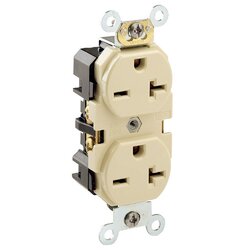The step down part takes place in left side of the circuit diagram. the way this works is one side has more coils than the other side, and depending on the ratio of the turns, the voltage would step down by that ratio. so if they use a 10:1 ratio or 18:1 ratio, i don't there there is going to be any difference in efficiency except the fact that there will be more loss since its at a higher voltage. However i could be wrong as this is a very VERY simple power supply and at best its 40-50% efficient. (But it is only made out of like 5-10 components, a few bucks.... ) but i suppose the general process is the same... I could be wrong, im only a student =P
A transformer and bridge rectifier are pretty efficient - that's not where the losses are. Transformers lose approximately nothing, and you do lose a little bit of voltage across the diodes in the rectifier.
Inefficiencies come from converting the rectified wave to a clean DC voltage. Generally you'll use some big capacitors to smooth out some ripple prior to a regulator, and those caps will pass some AC current. Then, the regular will drop some voltage to keep its transistors in regulation - you'll usually drop a couple of volts there.
So, if I was building a 12v supply, I would do something like this:
12V transformer, which will give me ~15v peak output. Rectify that, and I have about 14V left over. That's good, because I want about 2v of headroom for my regulator to stay in regulation, which will output a steady 12V.
Then, if you really want to be picky, you can account for all the resistances you're incurring along the way with wires, filter chokes, the transformer, etc, which will all dump some power as heat. The result is that 80% efficiency is actually pretty decent considering all the losses along the way.
As you try to move that 80% closer to 90%, you run into a lot of problems. You need more expensive, lower resistance parts to avoid throwing away power along the transmission path. You need higher gauge transformers, which are expensive simply because of the amount of copper you're using. They get bigger, too. You've got to upgrade all the wire, and things get more difficult as everything gets thicker. You need a more efficient regulator, and there are limits to how small you can make the bias voltage for a single transistor - as they get smaller and require less bias voltage, they get harder to cool and can't pass as much current. Physics demand that you drop at least some voltage across your bridge rectifier and regulator, so you can't get away from that. And the closer you push these things to their limit (less regulator voltage drop means less headroom and less margin of error) the more likely little bumps in power supply or demand will drop the whole circuit out of regulation and fry or shut down the supply.



